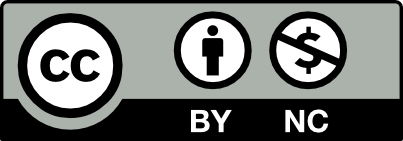The story of editor and journalist Vasyl Myroshnyk, who delivers his newspaper to some of the most remote villages of the Ukrainian front.
“Vasyl is not very familiar with new technologies and therefore, his daughter will help him”, told us in advance our contact that arranged the interview. Shortly after, a woman appeared on the screen and made some necessary adjustments. Then, she went off the screen and Vasyl took her place. He got comfortable in his armchair and nodded hello at the camera. He is 65 years old; he wears glasses and there are shelves full of books behind him.
At once, he started explaining how he delivers his newspaper to the most remote villages of the wider Kharkiv region, near the Ukrainian borders, often next to the Russian army positions.
“The first thing that a newspaper needs is to be useful to citizens”, he says in Ukrainian behind the screen.
“Zorya” Newspaper
Vasyl’s newspaper is called “Zorya” (meaning “Dawn”) and is sold at the symbolic price of 10 Hryvnia (approximately 20 cents). “This is the old, Soviet name, that has over 100 years history”, he said.
“Zorya” is published in Zolochiv district, Kharkiv region, where Vasyl comes from and lives. “I started publishing another newspaper in a neighbouring, richer region to pay for Zorya’s expenses”, he added. These two newspapers have now been merged into a single, weekly edition called “Zorya and Bohodukhiv Herald”.
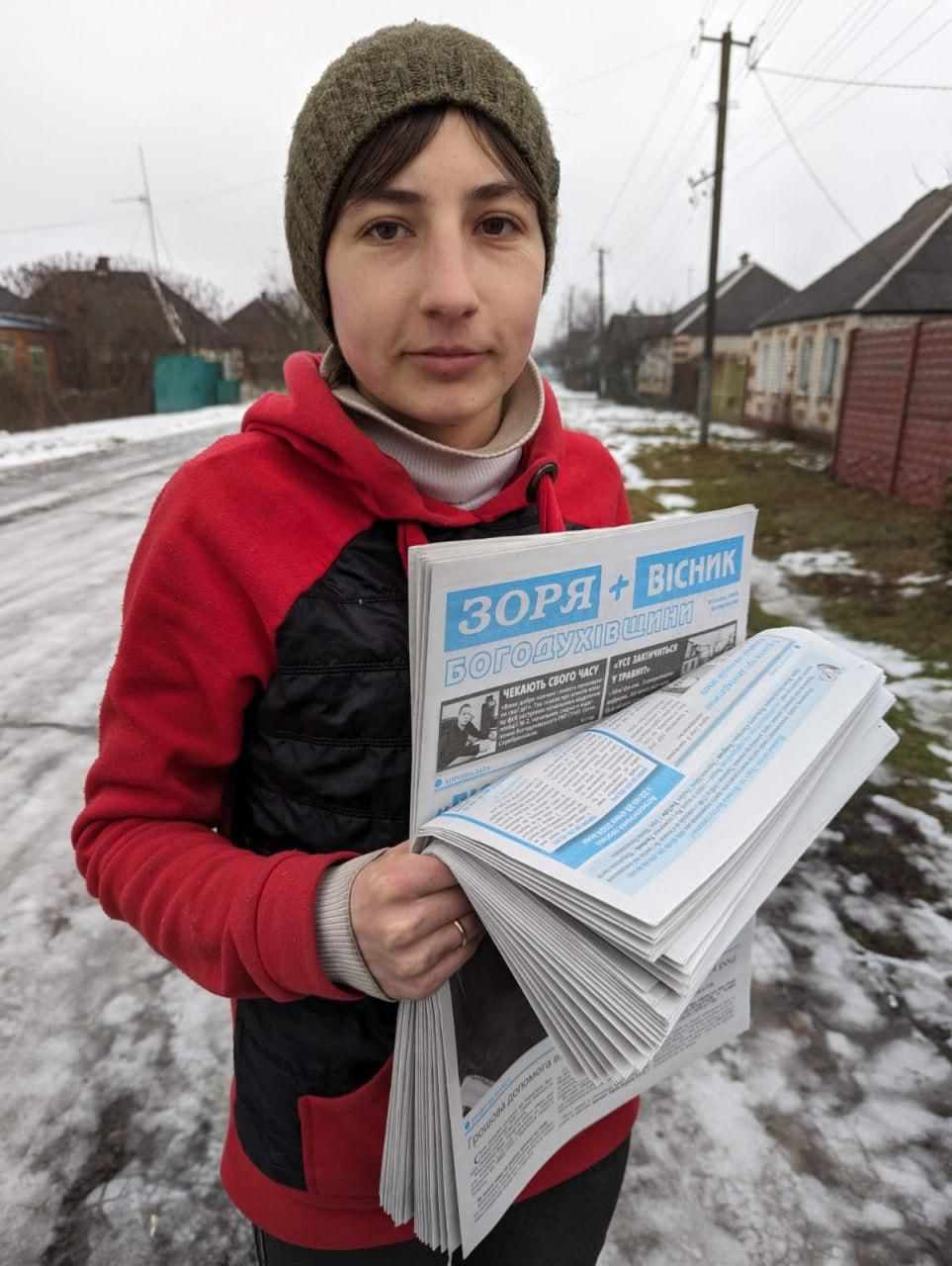
Kharkiv region, situated in northeastern Ukraine, had been at the heart of the Russian attacks already since the start of the war in February 2022, with parts of the region falling into the hands of the Russians. It was retaken by the Ukrainian forces in September 2022; however, it is still under repeated Russian fire, with Zolochiv being one of the targets.
On Wednesdays and Thursdays, Vasyl loads newspapers on his white Renault mini van and drives a distance of at least 380 – 400 kilometers. He delivers papers to some of the most remote villages of the war front, many of which do not have access to basic goods, the Internet or even electricity.
Many of these villages “are just 100 meters away from Russian army positions”, as he pointed out. He explained that when he visited Ukrainian regions that had been occupied by the Russians, the first thing the locals asked him was whether he had brought the newspaper with him.
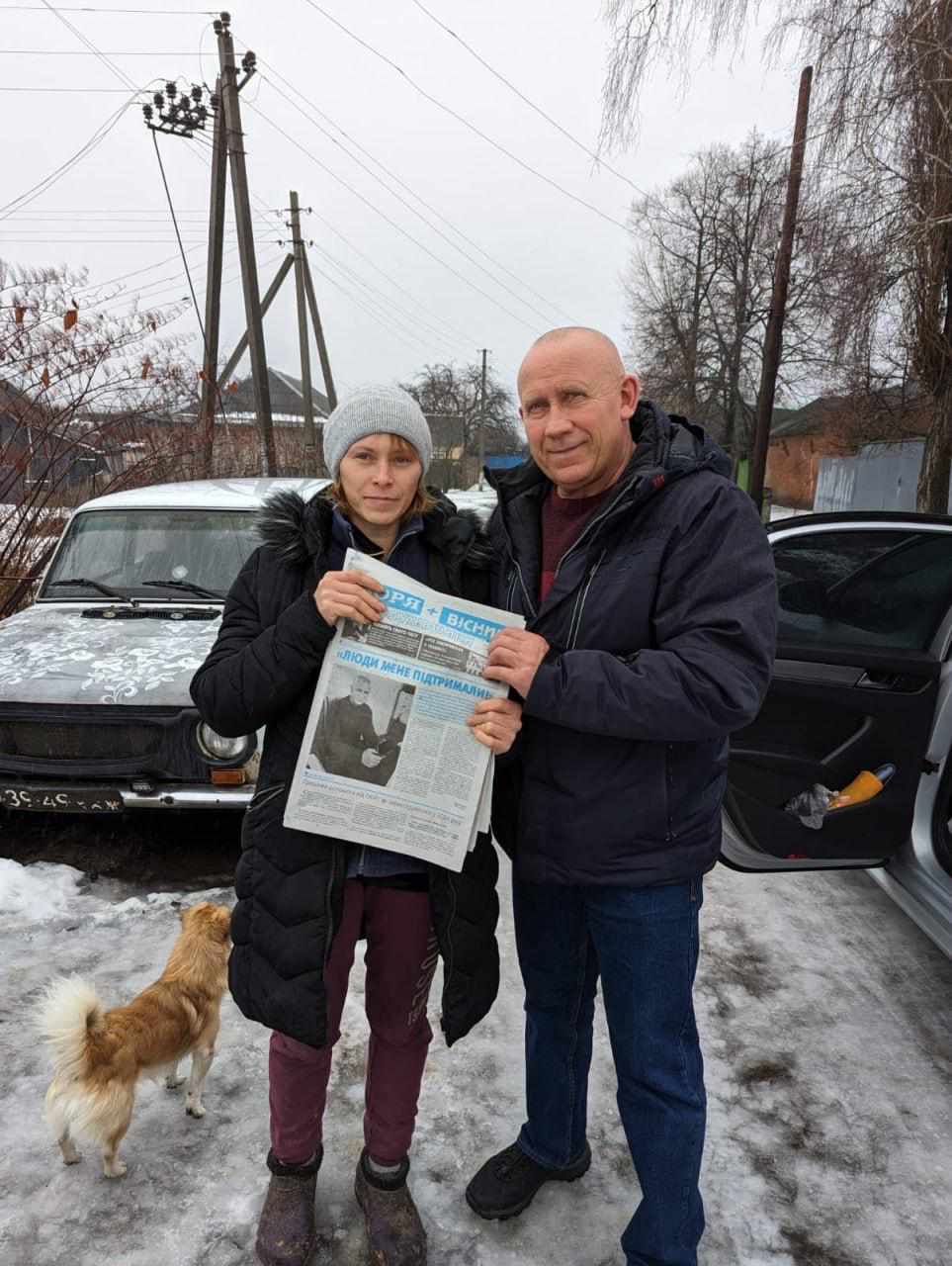
“The newspaper is their sole channel to their country, since there are no other means of communicating”, the Ukrainian editor-in-chief and journalist told iMEdD.
Vasyl had created his own newspaper distribution system already before the Russian invasion of Ukraine in February 2022. However, when the war started, post offices were closed, effectively meaning that distribution had to be made solely by himself.
He writes articles, publishes and distributes the newspaper by himself, with the help of his daughter, also journalist, and another employee. “Our readers are under threat of extinction”, he said.
In the Ukraine invasion, freedom of press also suffers: a Timeline
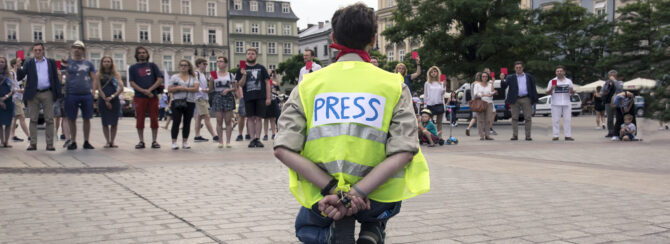
iMEdD team – An analytical timeline documenting global actions that affected the flow of information in Ukraine and Russia.
The Headline With the Soldier
Halfway through our conversation, Vasyl showed a front page of the newspaper to the camera. Until interpreting from Ukrainian into Greek, a man’s portrait in military dress holding a young girl in his arms was on the screen.
He was a Ukrainian soldier, who being on leave went to his village to visit his family. There, while driving his car, he stood on a mine and the vehicle exploded. As a result, his wife and son lost their lives, while he and his daughter were seriously injured.
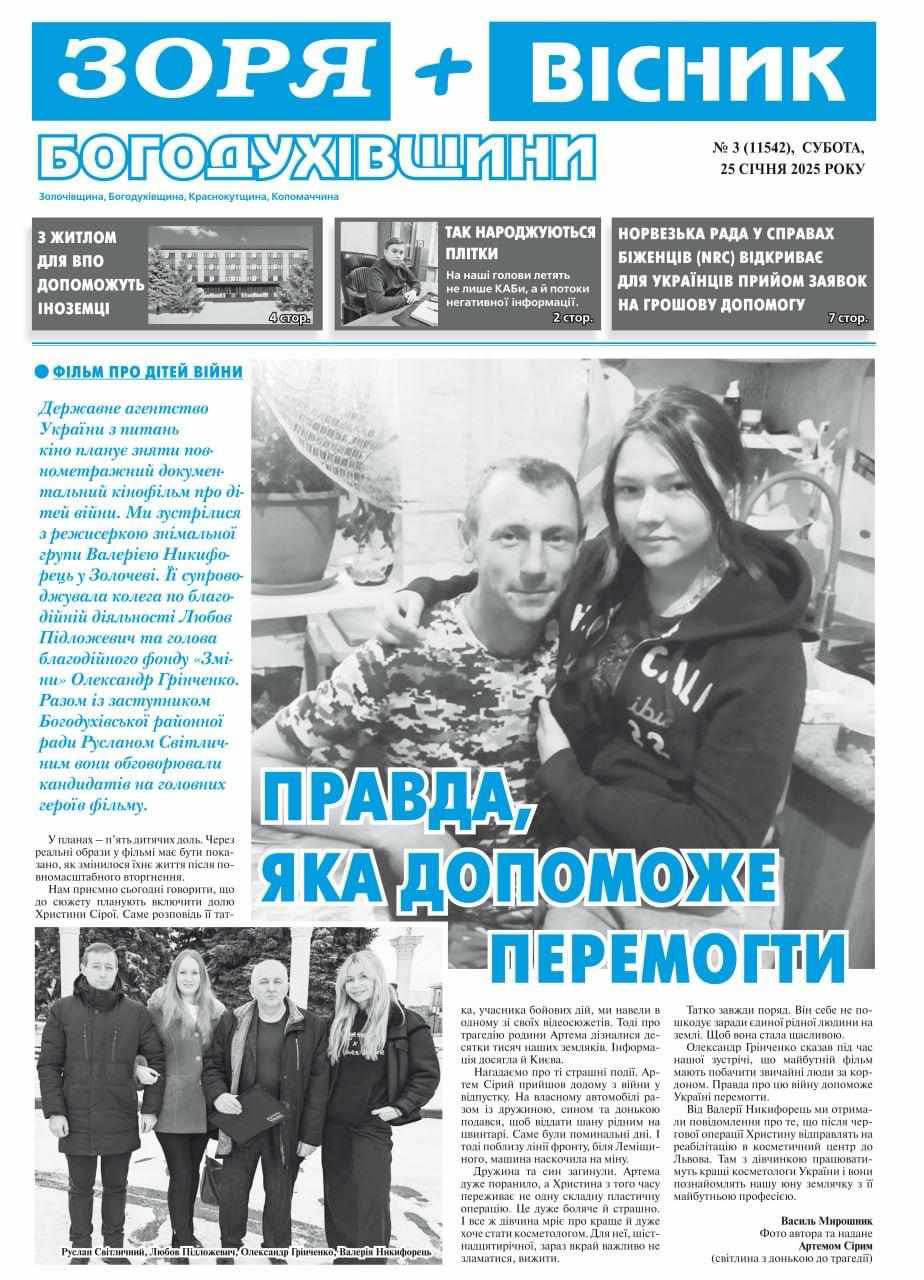
Vasyl wrote about it and so volunteer organizations mobilized, with the result that the girl, who suffered from severe burns, received the appropriate treatment and got necessary plastic surgeries.
“In villages that are on the frontline of the conflict, the locals know that the newspaper is there to help them deal with their problems”, Vasyl commented.
UK’s newspaper Daily Mail referred to Vasyl as a “quiet hero”, while his work as “the world’s most dangerous newspaper round”.
Attacks on the Editorial Office and the Network of Smugglers
When the Russian offensive began, the local printing house in Kharkiv closed for six months, resulting in the suspension of the newspaper’s circulation. “Then I had to learn how to use my mobile phone to broadcast live”, Vasyl Myroshnyk remembers.
According to him, his videos showed the Russian bombings and their effect on Zolochiv, at a time when the Russians claimed that the Ukrainian army was the one that attacked the city. “That’s why I got targeted”, he noted.
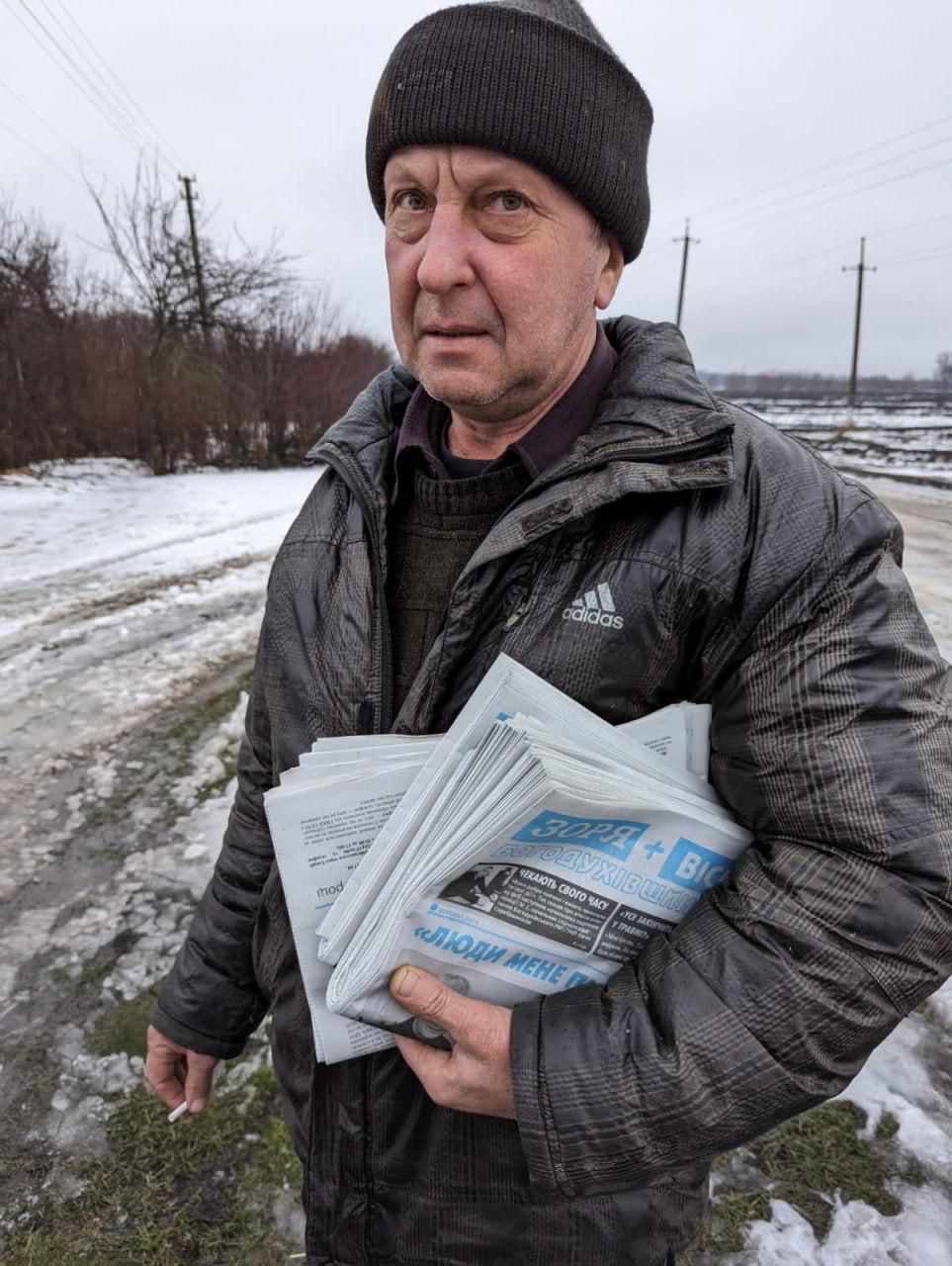
Indeed, in April 2022, Russian forces shelled the editorial office of Zorya newspaper. «It was definitely a targeted attack; the Russians know what they are doing and they are attacking the media. I suspect that the Russians were given the office’s coordinates by a local network of smugglers that cooperates with them», Vasyl said.
The editorial office of Zorya has been attacked eight times since then, amid Russian missile attacks targeting the city. «For safety reasons, I am no longer telling where our office is», he added.
And when we asked Vasyl which moment is causing him strong emotions after all this time that he is delivering the newspaper, he lifted up his hands as a form of despair and bewilderment. A few minutes later, he crossed himself. There’s too many stories to remember: when a Russian military helicopter was chasing his car; when he narrowly avoided a bomb, when he got a flat tire because of splinters.
But to him, the most important thing is this: “All I want is for people to know the truth”, he noted before bringing our conversation to a close.
